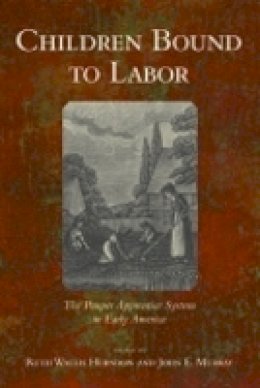
Children Bound to Labor: The Pauper Apprentice System in Early America
Ruth Wallis Herndon (Ed.)
The history of early America cannot be told without considering unfree labor. At the center of this history are African and Native American adults forced into slavery; the children born to these unfree persons usually inherited their parents' status. Immigrant indentured servants, many of whom were young people, are widely recognized as part of early American society. Less familiar is the idea of free children being taken from the homes where they were born and put into bondage.As Children Bound to Labor makes clear, pauper apprenticeship was an important source of labor in early America. The economic, social, and political ... Read more
Contributors: Monique Bourque, Willamette University; Holly Brewer, North Carolina State University; Gillian Hamilton, University of Toronto; Ruth Wallis Herndon, Bowling Green State University; Steve Hindle, University of Warwick; Paul Lachance, University of Ottawa; Timothy J. Lockley, University of Warwick; Gloria L. Main, University of Colorado, Boulder; John E. Murray, University of Toledo; Jean B. Russo, Historic Annapolis Foundation; Jean Elliott Russo, independent scholar; Adriana E. van Zwieten, Biographical Dictionary of Pennsylvania Legislators; T. Stephen Whitman, Mount St. Mary's University
Show LessProduct Details
About Ruth Wallis Herndon (Ed.)
Reviews for Children Bound to Labor: The Pauper Apprentice System in Early America
